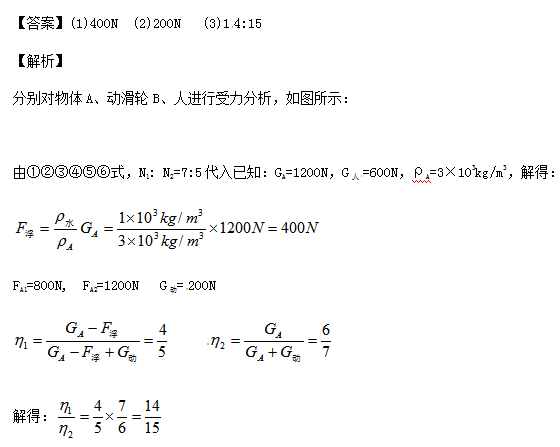【www.gpsvo.com--口才训练】
初中英语有许多的语法,掌握了对写作阅读有大帮助小编在这里整理了五种供大家阅读,快来学习学习吧!
初中英语五种语法知识点总结
一.名词
I.名词的种类:
专有名词
普通名词
国名.地名.人名,
团体.机构名称
可数名词
不可数名词
个体名词
集体名词
抽象名词
物质名词
II. 名词的数:
1. 规则名词的复数形式:
名词的复数形式,一般在单数形式后面加-s或-es。现将构成方法与读音规则列表如下:
规则
例词
1
一般情况在词尾加-s
map-maps, sea-seas, girl-girls, day-days
2
以s, x, ch, sh结尾的名词后加-es
class-classes, box-boxes, watch-watches, dish-dishes
3
以-f或-fe结尾的词
变-f和-fe为v再加-es
leaf-leaves, thief-thieves, knife-knives, loaf-loaves, wife-wives
加-s
belief-beliefs, chief-chiefs, proof-proofs, roof-roofs, gulf-gulfs
4
以辅音字母加y结尾的名词,变y为i加-es
party-parties, family-families, story-stories, city-cities
5
以元音字母加y结尾的名词,或专有名词以y结尾的,加-s
toy-toys, boy-boys, day-days, ray-rays, Henry-Henrys
6
以辅音字母加-o结尾的名词
一般加-es
hero-heroes, Negro-Negroes, potato-potatoes, tomato-tomatoes
不少外来词加-s
piano-pianos, photo-photos, auto-autos, kilo-kilos, solo-solos
两者皆可
zero-zeros/zeroes, volcano-volcanoes/ volcanos
7
以元音字母加-o结尾的名词加-s
radio-radios, bamboo-bamboos, zoo-zoos
8
以-th结尾的名词加-s
truth-truths, mouth-mouths, month-months, path-paths,
2. 不规则名词复数:
英语里有些名词的复数形式是不规则的,现归纳如下:
规则
例词
1
改变名词中的元音字母或其他形式
man-men, woman-women, foot-feet, goose-geese, mouse-mice
2
单复数相同
sheep, deer, series, means, works, fish, species li, yuan, jin,
3
只有复数形式
ashes, trousers, clothes, thanks, goods, glasses, compasses, contents
4
一些集体名词总是用作复数
people, police, cattle, staff
5
部分集体名词既可以作单数(整体)也可以作复数(成员)
audience, class, family, crowd, couple, group, committee, government, population, crew, team, public, enemy, party
6
复数形式表示特别含义
customs(海关), forces(军队), times(时代), spirits(情绪), drinks(饮料), sands(沙滩), papers(文件报纸), manners(礼貌), looks(外表), brains(头脑智力), greens(青菜), ruins(废墟)
7
表示“某国人”
加-s
Americans, Australians, Germans, Greeks, Swedes, Europeans
单复数同形
Swiss, Portuguese, Chinese, Japanese
以-man或-woman结尾的改为-men,-women
Englishmen, Frenchwomen
8
合成名词
将主体名词变为复数
sons-in-law, lookers-on, passers-by, story-tellers, boy friends
无主体名词时将最后一部分变为复数
grown-ups, housewives, stopwatches
将两部分变为复数
women singers, men servants
III. 名词的所有格:
名词在句中表示所有关系的语法形式叫做名词所有格。所有格分两种:一是名词词尾加’s构成,二是由介词of加名词构成。前者多表示有生命的东西,后者多表示无生命的东西。
1. ’s所有格的构成:
单数名词在末尾加’s
the boy’s father, Jack’s book, her son-in-law’s photo,
复数名词
一般在末尾加’
the teachers’ room, the twins’ mother,
不规则复数名词后加’s
the children’s toys, women’s rights,
以s结尾的人名所有格加’s或者’
Dickens’ novels, Charles’s job, the Smiths’ house
表示各自的所有关系时,各名词末尾均须加’s
表示共有的所有关系时在最后一词末加’s
表示"某人家""店铺",所有格后名词省略
the doctor’s, the barber’s, the tailor’s, my uncle’s
2. ’s所有格的用法:
1
表示时间
today’s newspaper, five weeks’ holiday
2
表示自然现象
the earth’s atmosphere, the tree’s branches
3
表示国家城市等地方的名词
the country’s plan, the world’s population,
4
表示工作群体
the ship’s crew, majority’s view, the team’s victory
5
表示度量衡及价值
a mile’s journey, five dollars’ worth of apples
6
与人类活动有特殊关系的名词
the life’s time, the play’s plot
7
某些固定词组
a bird’s eye view, a stone’s throw, at one’s wit’s end(不知所措)
3. of所有格的用法:
用于无生命的东西:the legs of the chair, the cover of the book
用于有生命的东西,尤其是有较长定语时:the classrooms of the first-year students
用于名词化的词:the struggle of the oppressed
二.冠词
冠词分为不定冠词(a, an),定冠词(the),和零冠词。
I.不定冠词的用法:
1
指一类人或事,相当于a kind of
A plane is a machine that can fly.
2
第一次提及某人某物,非特指
A boy is waiting for you.
3
表示“每一”相当于every,one
We study eight hours a day.
4
表示“相同”相当于the same
We are nearly of an age.
5
用于人名前,表示不认识此人或与某名人有类似性质的人或事
A Mr. Smith came to visit you when you were out
That boy is rather a Lei Feng.
6
用于固定词组中
A couple of, a bit, once upon a time, in a hurry, have a walk, many a time
7
用于quite, rather, many, half, what, such之后
This room is rather a big one.
8
用于so(as, too, how)+形容词之后
She is as clever a girl as you can wish to meet.
II. 定冠词的用法:
1
表示某一类人或物
The horse is a useful animal.
2
用于世上独一无二的事物名词前
the universe, the moon, the Pacific Ocean
3
表示说话双方都了解的或上文提到过的人或事
Would you mind opening the door?
4
用于乐器前面
play the violin, play the guitar
5
用于形容词和分词前表示一类人
the reach, the living, the wounded
6
表示“一家人”或“夫妇”
the Greens, the Wangs
7
用于序数词和形容词副词比较级最高级前
He is the taller of the two children.
8
用于国家党派等以及江河湖海,山川群岛的名词前
the
9
用于表示发明物的单数名词前
The compass was invented in
10
在逢十的复数数词之前,指世纪的某个年代
in the 1990’s
11
用于表示单位的名词前
I hired the car by the hour.
12
用于方位名词,身体部位名词,及表示时间的词组前
He patted me on the shoulder.
III. 零冠词的用法:
1
专有名词,物质名词,抽象名词,人名地名等名词前
Beijing University, Jack,
2
名词前有this, my, whose, some, no, each, every等限制
I want this book, not that one. / Whose purse is this?
3
季节,月份,星期,节假日,一日三餐前
March, Sunday, National Day, spring
4
表示职位,身份,头衔的名词前
Lincoln was made President of America.
5
学科,语言,球类,棋类名词前
He likes playing football/chess.
6
与by连用表示交通工具的名词前
by train, by air, by land
7
以and连接的两个相对的名词并用时
husband and wife, knife and fork, day and night
8
表示泛指的复数名词前
Horses are useful animals.
三.代词:
I.代词可以分为以下七大类:
1
人称代词
主格
I, you, he, she, it, we, you, they
宾格
me, you, him, her, it, us, you, them
2
物主代词
形容词性
my, your, his, her, its, our, their
名词性
mine, yours, his, hers, its, ours, theirs
3
反身代词
myself, yourself, himself, herself, itself, ourselves, yourselves, themselves
4
指示代词
this, that, these, those, such, some
5
疑问代词
who, whom, whose, which, what, whoever, whichever, whatever
6
关系代词
that, which, who, whom, whose, as
7
不定代词
one/ some/ any, each/ every, none/ no, many/ much, few/ little/ a few/ a little,
other/ another, all/ both, neither/ either
II. 不定代词用法注意点:
1. one, some与any:
1) one可以泛指任何人,也可特指,复数为ones。some多用于肯定句,any多用于疑问句和否定句。
One should learn to think of others.
Have you any bookmarks? No, I don’t have any bookmarks.
I have some questions to ask.
2) some可用于疑问句中,表示盼望得到肯定的答复,或者表示建议,请求等。
Would you like some bananas? Could you give me somemoney?
3) some 和any修饰可数名词单数时,some表示某个,any表示任何一个。
I have read this article in some magazine. Please correct the mistakes, if any.
4) some和数词连用表示“大约”,any可与比较级连用表示程度。
There are some 3,000 students in this school. Doyou feel any better today?
2. each和every:
each强调个别,代表的数可以是两个或两个以上,而every强调整体,所指的数必须是三个或三个以上。
Each student has a pocket dictionary. / Each (of us) has adictionary. / We each have a dictionary.
Every student has strong and weak points. / Every one of us hasstrong and weak points.
3. none和no:
no等于not any,作定语。none作主语或宾语,代替不可数名词,谓语用单数,代替可数名词,谓语单复数皆可以。
There is no water in the bottle.
How much water is there in the bottle? None.
None of the students are (is) afraid of difficulties.
4. other和another:
1) other泛指“另外的,别的”常与其他词连用,如:theother day, every other week, some other reason, no other way,
the other特指两者中的另外一个,复数为the others。如:
He held a book in one hand and his notes in the other.
Two students in our class failed, but all the others passed theexam.
2) another指“又一个,另一个”无所指,复数形式是others,泛指“别的人或事”如:
I don’t like this shirt, please show me another (one).
The trousers are too long, please give me another pair / someothers.
Some like football, while others like basketball.
5. all和both, neither和either
all表示不可数名词时,其谓语动词用单数。both和all加否定词表示部分否定,全部否定用neither和none.
All of the books are not written in English. / Not all ofthe books are written in English.
Both of us are not teachers. / Not both of us are teachers./ Either of us is a teacher.
四.形容词和副词
I.形容词:
1. 形容词的位置:
1) 形容词作定语通常前置,但在下列情况后置:
1
修饰some, any, every, no和body, thing, one等构成的复合不定代词时
nobody absent, everything possible
2
以-able, -ible结尾的形容词可置于有最高级或only修饰的名词之后
the best book available, the only solution possible
3
alive, alike, awake, aware, asleep等可以后置
the only person awake
4
和空间、时间、单位连用时
a bridge 50 meters long
5
成对的形容词可以后置
a huge room simple and beautiful
6
形容词短语一般后置
a man difficult to get on with
2) 多个形容词修饰同一个名词的顺序:
代词
数词
性状形容词
冠词前的形容词
冠词
指示代词
不定代词
代词所有格
序数词
基数词
性质
状态
大小
长短
形状
新旧
温度
颜色
国籍
产地
材料
质地
名词
all
both
such
the
a
this
another
your
second
next
one
four
beautiful
good
poor
large
short
square
new
cool
black
yellow
Chinese
London
silk
stone
3) 复合形容词的构成:
1
形容词+名词+ed
kind-hearted
6
名词+形容词
world-famous
2
形容词+形容词
dark-blue
7
名词+现在分词
peace-loving
3
形容词+现在分词
ordinary-looking
8
名词+过去分词
snow-covered
4
副词+现在分词
hard-working
9
数词+名词+ed
three-egged
5
副词+过去分词
newly-built
10
数词+名词
twenty-year
II. 副词
副词的分类:
1
时间副词
soon, now, early, finally, once, recently
5
频度副词
always, often, frequently, seldom, never
2
地点副词
here, nearby, outside, upwards, above
6
疑问副词
how, where, when, why
3
方式副词
hard, well, fast, slowly, excitedly, really
7
连接副词
how, when, where, why, whether, however, meanwhile
4
程度副词
almost, nearly, very, fairly, quite, rather
8
关系副词
when, where, why
III. 形容词和副词比较等级:
形容词和副词的比较等级分为原级,比较级和最高级。比较级和最高级的构成一般是在形容词和副词后加-er和-est,多音节和一些双音节词前加more 和most。
1. 同级比较时常常用 as…as…以及not so(as)…as…如:I amnot so good a player as you are.
2. 可以修饰比较级的词有:much, many, a lot, even, far, a bit, alittle, still, yet, by far, any, a great deal。
3. 表示一方随另一方变化时用“the more…the more…”句型。如:The harder you work, the more progress you will make.
4. 用比较级来表达最高级的意思。如:I have never spent a moreworrying day.
5. 表示倍数的比较级有如下几种句型:
Our school is three times larger than yours./Our school is fourtimes as large as yours./Our school is four times the size of yours.
6. 表示“最高程度“的形容词没有最高级和比较级。如:favourite,excellent, extreme, perfect。
五.介词
I.介词分类:
1
简单介词
about, across, after, against, among, around, at, below, beyond, during, in, on
2
合成介词
inside, into, onto, out of, outside, throughout, upon, within, without
3
短语介词
according to, because of, instead of, up to, due to, owing to, thanks to
4
双重介词
from among, from behind, from under, till after, in between
5
分词转化成的介词
considering(就而论), including
6
形容词转化成的介词
like, unlike, near, next, opposite
II. 常用介词区别:
1
表示时间的in, on, at
at表示片刻的时间,in表示一段的时间,on总是与日子有关
2
表示时间的since, from
since 指从过去到现在的一段时间,和完成时连用,from指从时间的某一点开始
3
表示时间的in, after
in指在一段时间之后,after表示某一具体时间点之后或用在过去时的一段时间中
4
表示地理位置的in, on, to
in表示在某范围内,on指与什么毗邻,to指在某环境范围之外
5
表示“在…上”的on, in
on只表示在某物的表面上,in表示占去某物一部分
6
表示“穿过”的through, across
through表示从内部通过,与in有关,across表示在表面上通过,与on有关
7
表示“关于”的about, on
about指涉及到,on指专门论述
8
between与among的区别
between表示在两者之间,among用于三者或三者以上的中间
9
besides与except的区别
besides指“除了…还有再加上”,except指“除了,减去什么”,不放在句首
10
表示“用”的in, with
with表示具体的工具,in表示材料,方式,方法,度量,单位,语言,声音
11
as与like的区别
as意为“作为,以…地位或身份”,like为“象…一样”,指情形相似
12
in与into区别
in通常表示位置(静态),into表示动向,不表示目的地或位置
分类词汇记忆
疾病与伤痛
accident
事故,意外的事
ache
疼痛
blind
失明
burn
烧伤火、热或酸所造成的伤害或伤痕
cancer
癌症
cold
伤风;感冒
cough
咳嗽
cut
剪;切;割
disease
疾病
fever
发烧;发热
flu
流感
headache
头痛
illness
疾病;生病;不健康
problem
问题,难题
toothache
牙疼
trouble
问题,疾病;烦恼,麻烦
wound
伤,伤害
感觉与情感
ache
疼痛
attention
注意,关心
care
照料,保护,小心
cheer
欢呼;喝彩
cheat
骗取,哄骗,作弊
cry
喊叫;哭
doubt
怀疑;疑惑
emotion
感情,情感
excuse
原谅;宽恕
favorite
最受喜爱的(东西)
fear
恐惧,害怕
feeling
感觉,知觉,触觉
fun
快乐;有趣的,令人愉快的
greeting
祝贺
hate
恨;讨厌
hobby
嗜好,兴趣
interest
兴趣,爱好
joy
欢乐,高兴,乐趣
laugh
笑;大笑;嘲笑
love
爱;热爱;很喜欢
pardon
原谅,宽恕
peace
和平;安宁;静寂
pity
怜悯;同情
pleasure
愉快;快乐;高兴
praise
赞扬,表扬
pride
自豪,骄傲
regard
关心,注意,致意,问候,尊敬
respect
尊敬,尊重
regret
可惜,遗憾;痛惜;哀悼
shame
羞愧,惭愧
silence
寂静;沉默
sense
感觉,判断力
smell
气味;嗅觉
smile
微笑
surprise
使吃惊;景气;令人意想不到的事情
sweet
甜蜜
taste
尝;品尝;品味
thank
感谢;谢意
touch
碰,触摸
wish
愿望;祝愿
wonder
惊讶,惊叹;奇迹
worry
烦恼;担忧;发怒;困扰
victory
胜利
\初中英语五种语法知识点总结相关文章:
1.初中英语语法八大时态总结
2.初中生的英语语法总结
3.初中英语语法总结大全
4.中考英语语法知识点归纳
5.小升初英语语法知识点总结





![[b2过铁饼技巧]铁饼技巧:铁饼的技术和训练、握法和练习](http://uploads.xuexila.com/allimg/1907/1221-1ZG0163631591.jpg)

![[自由式摔跤规则]自由式摔跤技巧大全](http://uploads.xuexila.com/allimg/1907/1209-1ZGF91A1.jpg)
![[台球技术提高训练方法]台球的基本技术训练](http://uploads.xuexila.com/allimg/1907/1221-1ZF6164242456.jpg)

![[高尔夫球握杆姿势图解]高尔夫球握杆与站姿的训练方法](http://uploads.xuexila.com/allimg/1907/1221-1ZFQARG41.jpg)






